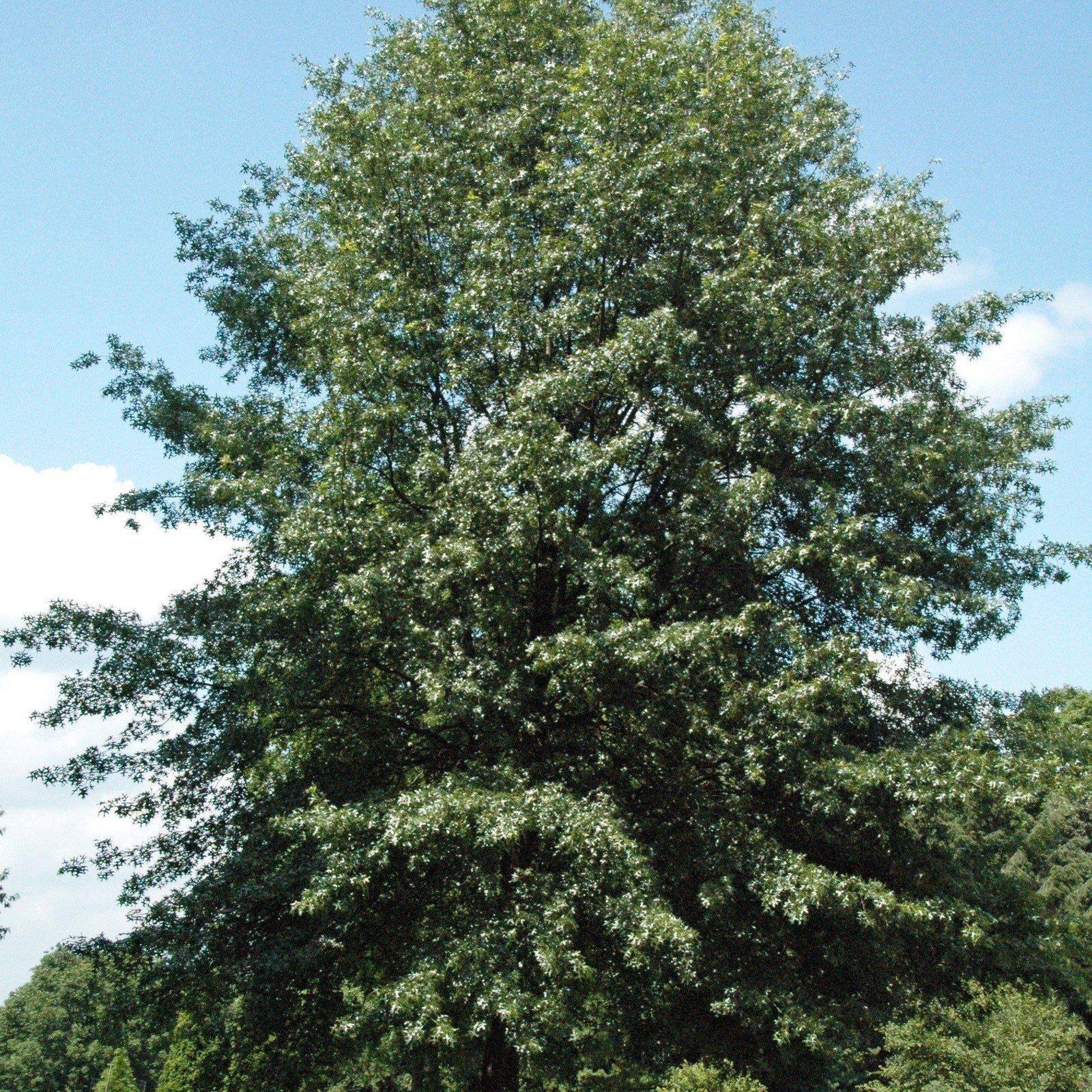Scarlet Oak is a large native deciduous tree with a straight trunk and an open rounded crown. The deeply cut dark green foliage with bristle tipped lobes turns scarlet in fall. The acorns have a deep bowl-shaped cups that cover half the acorn. Best grown in full sun and sandy, dry to medium well-drained acidic soils.
Quercus coccinea supports a wide variety of moths and butterflies, including: the Imperial Moth, Banded Hairstreak, Edward's Hairstreak, Gray Hairstreak, White-M Hairstreak, Horace’s Duskywing, and the Juvenal’s Duskywing.
|
Type: |
|
|
Origins: |
Eastern US; GA Native |
|
Height: |
50’ - 70’ |
|
Spread: |
40’ - 50’ |
|
Spacing: |
45’ |
|
USDA Hardiness Zone: |
4 - 9 |
|
Culture: |
|
|
Bloom Color: |
Green |
|
Season of Interest: |
MAINTENANCE NEEDS: Low Maintenance. Highly susceptible to oak wilt, but resistant to chlorosis. Problems including Leaf spots, anthracnose, canker, mildew, rust, wilts, rots, galls and numerous pests may occur.
LANDSCAPE USES: Accents or Group Plantings, Borders, Woodland Gardens, Naturalized Areas, Wildlife Gardens, Privacy Screen, and Shade Tree.
COMPANION PLANTS: Crape Myrtle, Serviceberry, Magnolia
IMAGES: Photo by James St. John, Quercus coccinea (scarlet oak) 1, (2) El Grafo, Quercus coccinea ÖBG 09-07-16, CC BY-SA 3.0, (3) Anders Lagerås, Scharlakanseklov, CC BY-SA 3.0, (4) Katja Schulz from Washington, D. C., USA, Scarlet Oak (31193582651), CC BY 2.0, (5) Famartin, 2014-11-02 14 18 05 Scarlet Oak during autumn along Hunters Ridge Drive in Hopewell Township, New Jersey, CC BY-SA 4.0, (6) Crusier, Quercus coccinea bark, CC BY-SA 3.0
*As plants have ranges in appearance they may not appear as the images shown

































































